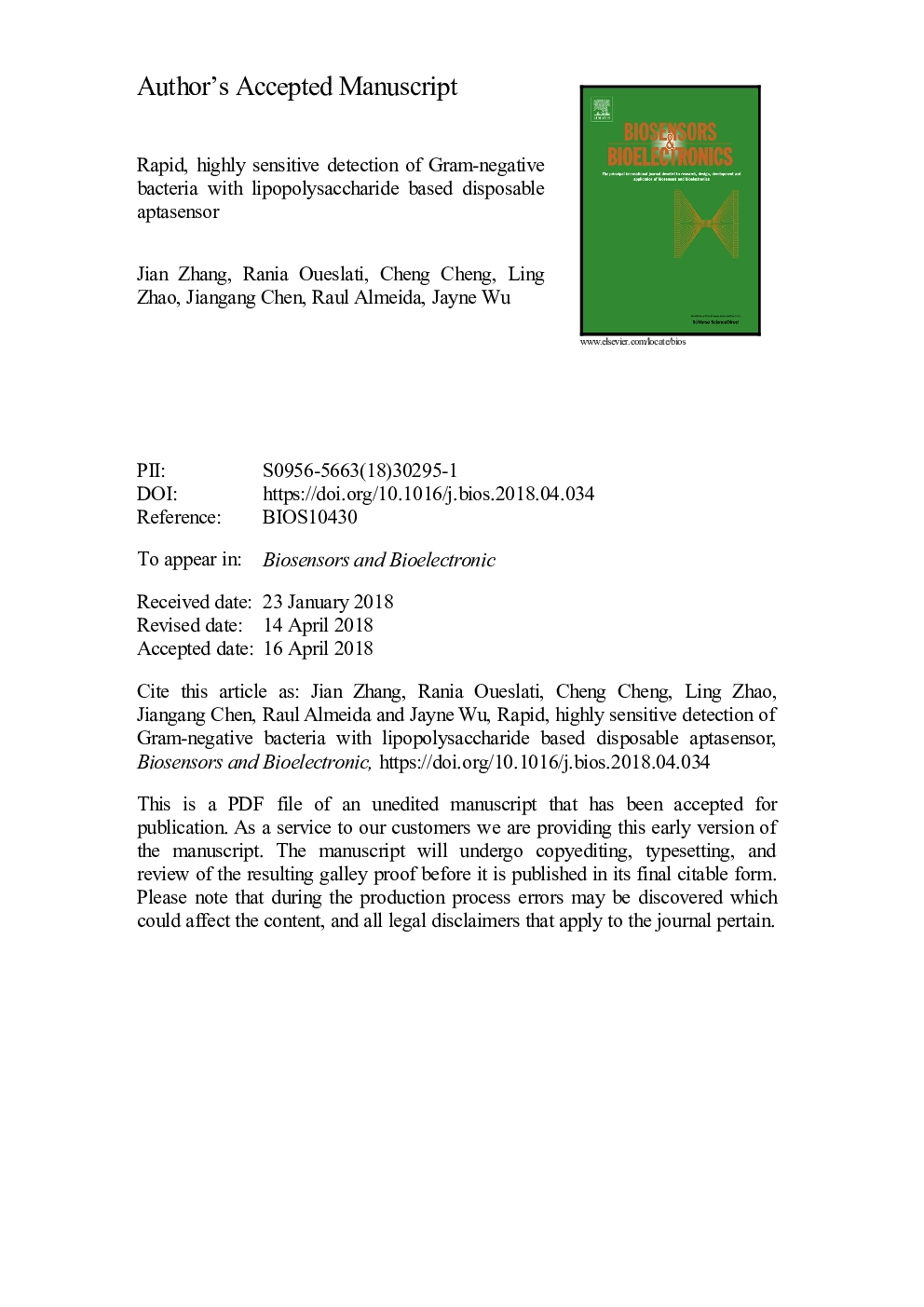| Article ID | Journal | Published Year | Pages | File Type |
|---|---|---|---|---|
| 7229254 | Biosensors and Bioelectronics | 2018 | 16 Pages |
Abstract
Gram-negative bacteria are one of the most common microorganisms in the environment. Their differential detection and recognition from Gram-positive bacteria has been attracting much attention over the years. Using Escherichia coli (E. coli) as a model, we demonstrated on-site detection of Gram-negative bacteria by an AC electrokinetics-based capacitive sensing method using commercial microelectrodes functionalized with an aptamer specific to lipopolysaccharides. Dielectrophoresis effect was utilized to enrich viable bacteria to the microelectrodes rapidly, achieving a detection limit of 102 cells/mL within a 30â¯sâ² response time. The sensor showed a negligible response to Staphylococcus aureus (S. aureus), a Gram-positive species. The developed sensor showed significant advantages in sensitivity, selectivity, cost, operation simplicity, and response time. Therefore, this sensing method has shown great application potential for environmental monitoring, food safety, and real-time diagnosis.
Keywords
Related Topics
Physical Sciences and Engineering
Chemistry
Analytical Chemistry
Authors
Jian Zhang, Rania Oueslati, Cheng Cheng, Ling Zhao, Jiangang Chen, Raul Almeida, Jayne Wu,
